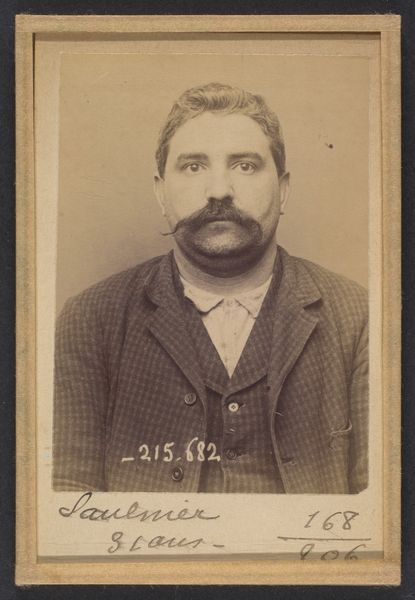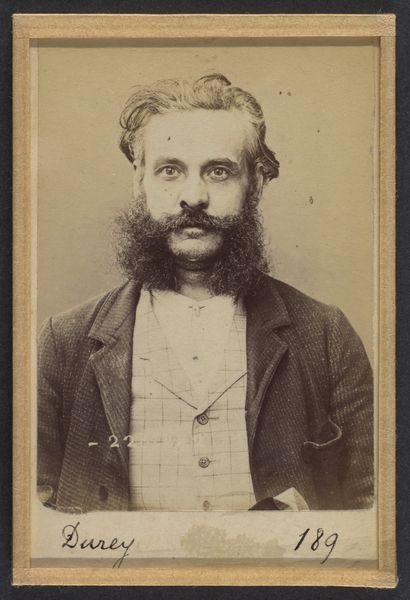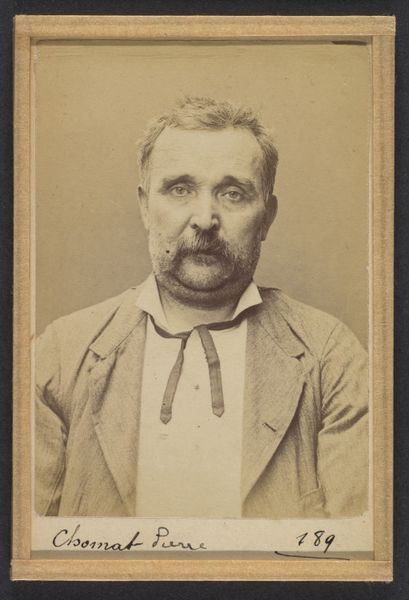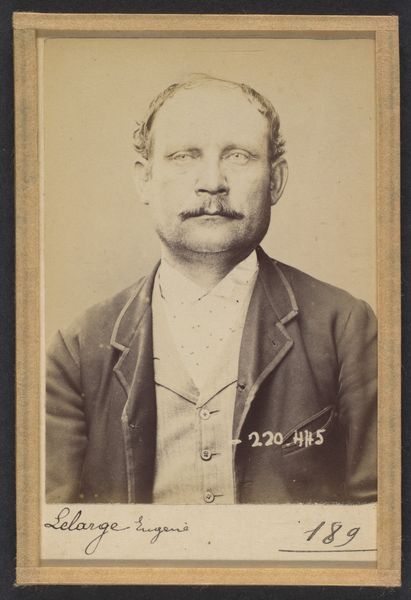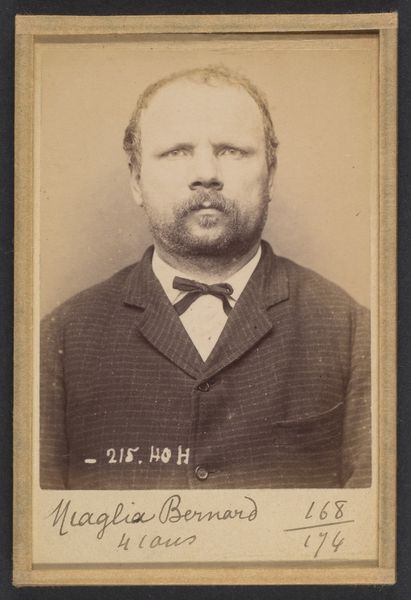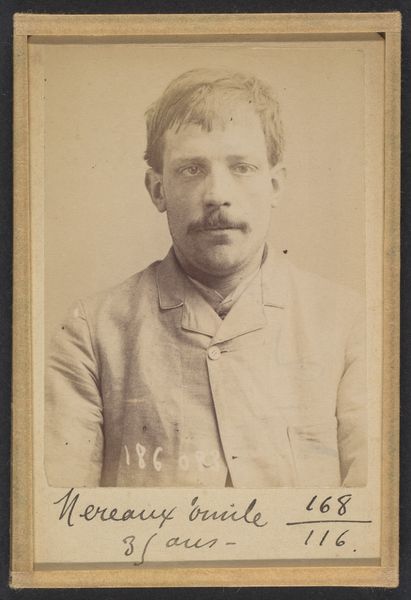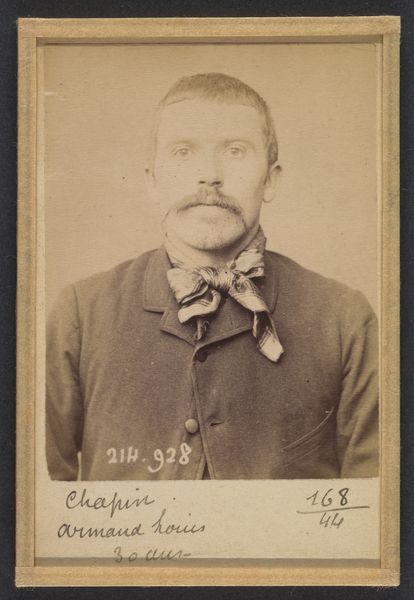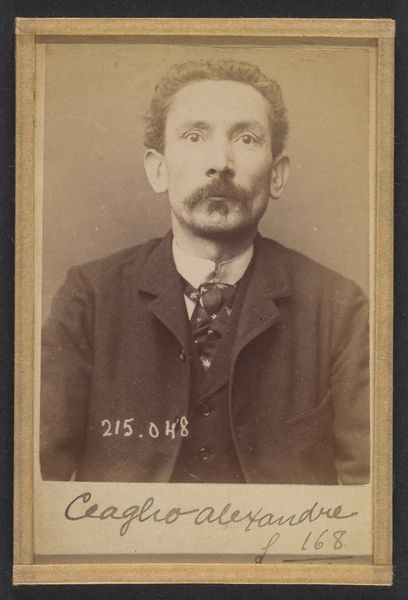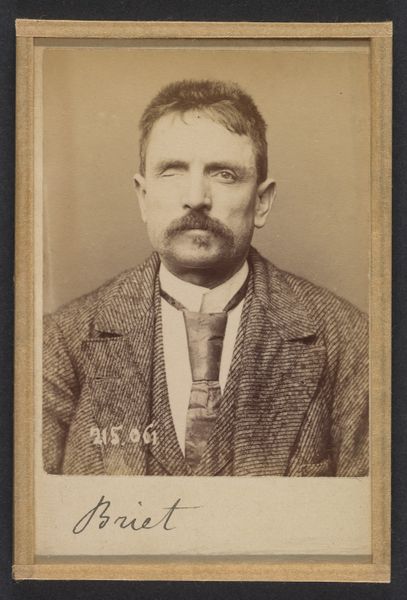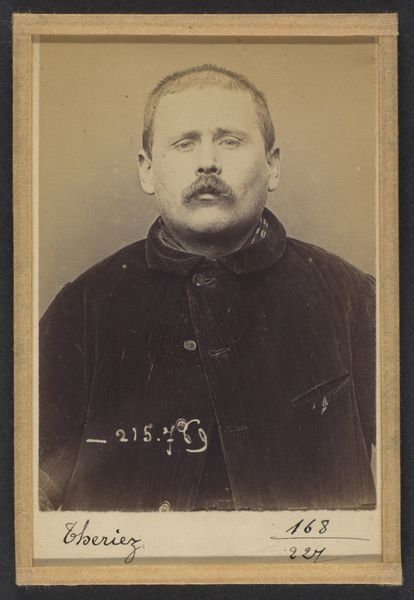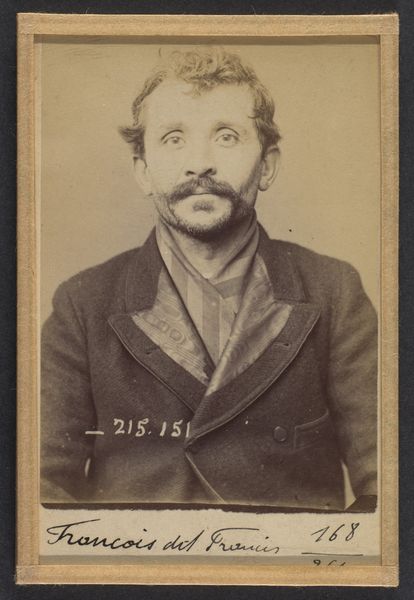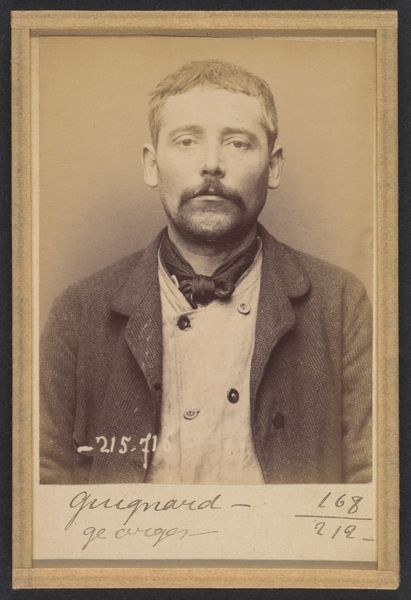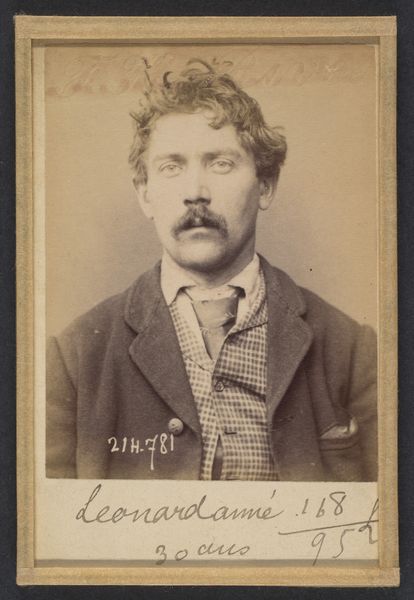
Tropini. Esprit, Antoine. 35 ans, né à San-Bueri (Italie). Tourneur. Anarchiste. 2/7/94. 1894
0:00
0:00
daguerreotype, photography
#
portrait
#
portrait
#
daguerreotype
#
photography
#
history-painting
#
realism
Dimensions: 10.5 x 7 x 0.5 cm (4 1/8 x 2 3/4 x 3/16 in.) each
Copyright: Public Domain
Curator: Let's examine this photograph taken in 1894 by Alphonse Bertillon, entitled "Tropini. Esprit, Antoine. 35 ans, né à San-Bueri (Italie). Tourneur. Anarchiste. 2/7/94.” It's currently held at the Metropolitan Museum of Art. Editor: It's unsettling. The man's gaze is so direct, almost confrontational. There’s a hint of fear or perhaps defiance in his eyes. The sepia tones amplify that feeling, adding a sense of aged weight. Curator: The power of Bertillon’s approach, born from his work in forensic science, aimed to document and categorize individuals. His photographic system, utilizing daguerreotypes like this one, had tremendous social implications. Note, Tropini's profession and political leanings are documented alongside his physical appearance, a method Bertillon championed. Editor: The label "Anarchiste" really leaps out, doesn’t it? Instantly it places him in a web of political anxieties of the late 19th century. That single word evokes bombs, rebellion, the fear of social upheaval. Curator: Precisely. It's important to recall that during this period, anarchism was viewed as a significant threat by the established order. Photography, therefore, became a tool for the state to document and control perceived threats to the social structure. It creates this sense of objective surveillance of so-called criminals and 'undesirables.' Editor: Looking closer, there’s a strange vulnerability. It’s not a hardened criminal, but a working-class man. The vest, the slightly rumpled shirt… the humanity is palpable despite the intention of the portrait. His direct gaze becomes more like a plea. The image reminds us of those stigmatized through society over the centuries through icons assigned with little real insight. Curator: The photograph, within its institutional frame, essentially attempts to strip Tropini of his identity, reducing him to a set of categorizations for a state database. Yet, as you pointed out, his humanity persists in the image. Editor: It's a fascinating collision of intentions. Art attempting to become science. And somehow, despite all of the late nineteenth-century social engineering, an evocative and compelling portrait. Curator: Indeed, the tension between social control and individual experience is vividly captured here, rendering it not merely a record, but a poignant cultural document.
Comments
No comments
Be the first to comment and join the conversation on the ultimate creative platform.
